Are you fascinated by presidential memorabilia? Have you come across a 1776-1976 bicentennial half dollar featuring John F. Kennedy’s likeness and wondered about its value?
JFK remains one of the most iconic U.S. presidents. Consequently, items bearing his image tend to captivate collectors and history enthusiasts alike.
But what’s the true value of the Bicentennial half dollar? You might be surprised to learn that while this coin is relatively common and can often be found in everyday transactions, certain rare variants could be valued at hundreds of dollars!
Continue reading to gain comprehensive insights into the 1776-1976 bicentennial half dollar’s value. By the end of this article, you’ll be equipped to make an informed decision about whether collecting Kennedy half dollars is a worthwhile pursuit.
Let’s delve into the details!
1776 To 1976 Bicentennial Half Dollar Value Chart
| Mint mark | Good | Fine | Extremely Fine | Uncirculated |
|---|---|---|---|---|
| 1776 to 1976 Half Dollar No Mint Mark Value | $2 | $2 | $6 | $20 |
| 1776 to 1976 Half Dollar D Value | $0.75 | $0.75 | $6 | $14 |
| 1776 to 1976 Half Dollar S (Regular, Proof) Value | – | – | – | $18 |
| 1776 to 1976 Half Dollar S (Regular, Silver) | $4.15 | $4.15 | $7 | $140 |
| 1776 to 1976 Half Dollar S (Silver, Proof) | – | – | – | $2,800 |
Background of the 1776-1976 Bicentennial Half Dollar
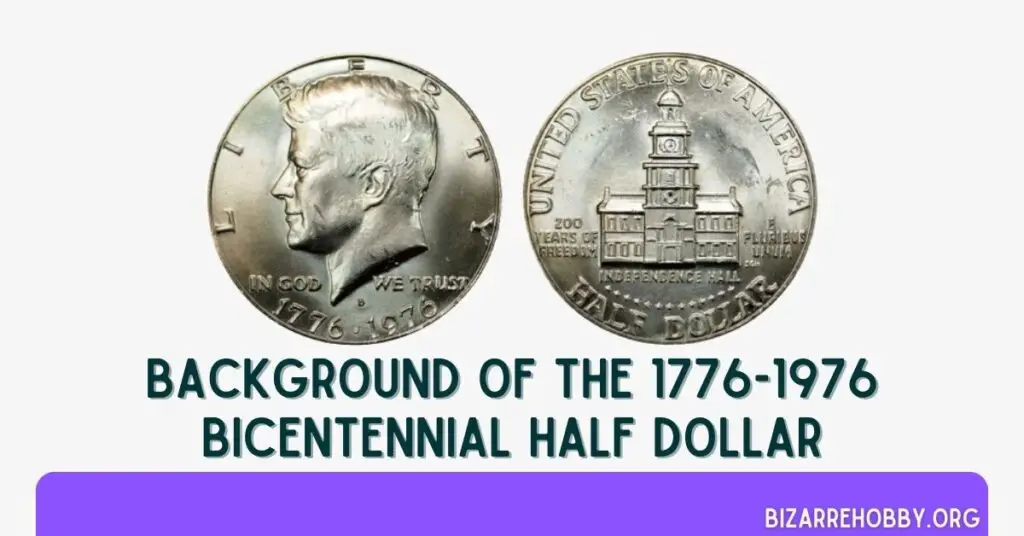
The year 1776 marks a pivotal moment in American history, signaling the nation’s break from British colonial rule. It was on July 4th of that year when thirteen colonies formally declared their independence, giving birth to a new nation.
Two centuries later, in 1976, the United States celebrated a monumental milestone: 200 years of independence and self-governance. As is tradition for such significant occasions, both federal and state governments organized various festivities and events to commemorate this bicentennial anniversary.
As part of these celebrations, Congress authorized the minting of three special Bicentennial coin sets. These included the Bicentennial Eisenhower Dollar, the Bicentennial Kennedy Half Dollar, and the Bicentennial Washington Quarter.
The U.S. Mint produced and released these coins into circulation in 1976, temporarily replacing the standard coins for that year.
In this article, we’ll focus specifically on the 1776-1976 Kennedy half dollar.
John F. Kennedy, the 35th president of the United States, holds the distinction of being the youngest person elected to the office. A Harvard alumnus and Navy veteran, Kennedy’s political career progressed from Democratic Congressman to Senator, ultimately securing the party’s nomination for president. He emerged victorious in a closely contested race against Republican candidate Richard Nixon.
One of Kennedy’s most enduring quotes is, “Ask not what your country can do for you; ask what you can do for your country.”
Tragically, JFK’s presidency was cut short when he was assassinated on November 22, 1963, after serving less than three years in office. His legacy endures, and he remains one of the most revered presidents in American history.
Characteristics of the 1776-1976 Bicentennial Half Dollar
This coin is also referred to as the Bicentennial half dollar, the Bicentennial Kennedy half dollar, or simply the 1776-1976 Kennedy half dollar.
Let’s examine its key features:
Obverse Design of the 1776-1976 Bicentennial Half Dollar
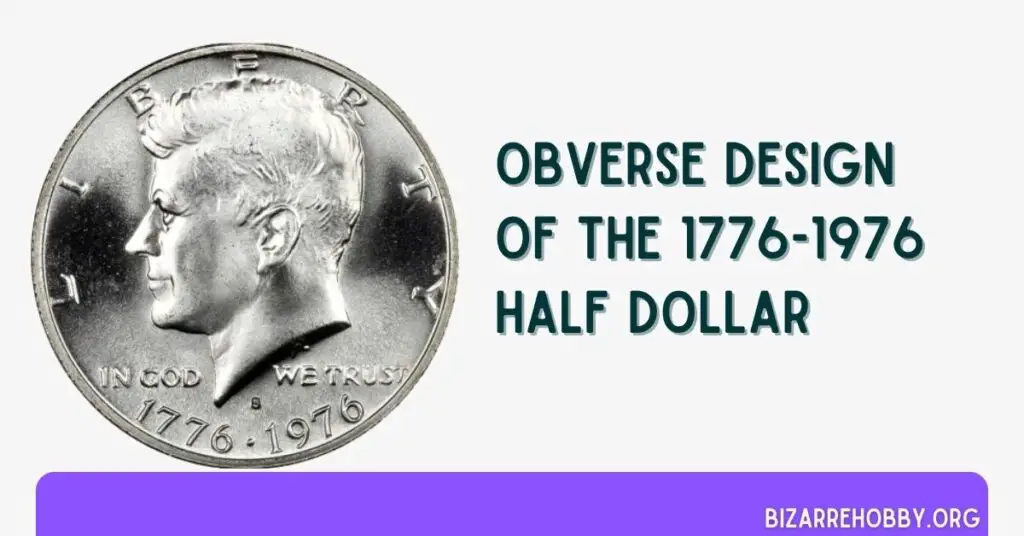
The coin’s obverse (heads side) showcases a left-facing portrait of President John F. Kennedy.
The word “LIBERTY” is prominently displayed around the upper rim, while the dates “1776-1976” are inscribed along the lower edge, symbolizing two centuries of American independence.
The national motto “IN GOD WE TRUST” also appears on the obverse. You’ll notice the initials “GR” beneath the president’s truncated neck, representing Gilroy Roberts, the designer and engraver of the coin’s obverse.
Reverse Design of the 1776-1976 Bicentennial Half Dollar
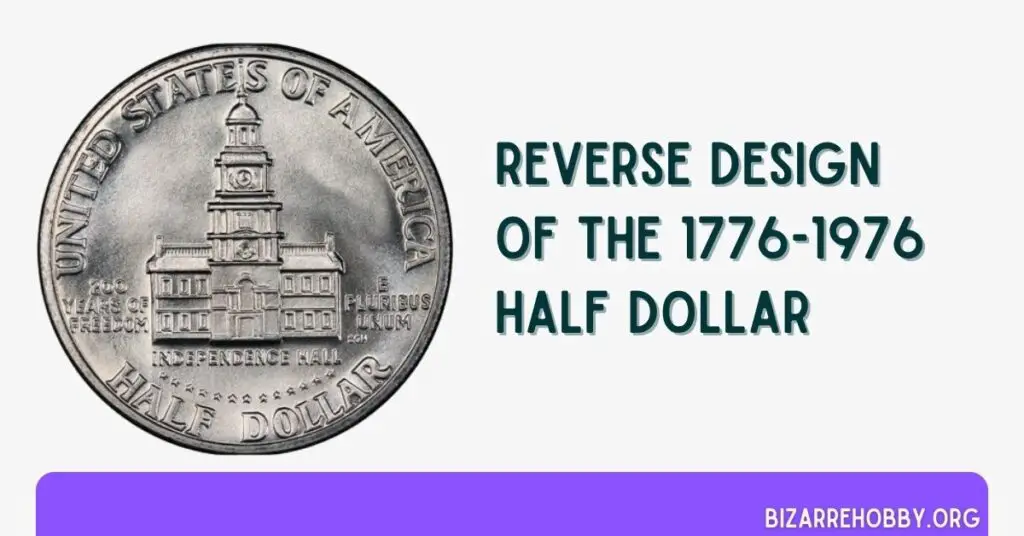
The reverse side features an illustration of Independence Hall, the historic site where the Founding Fathers deliberated and adopted both the Declaration of Independence and the Constitution.
Beneath the building’s image, you’ll find its name, “INDEPENDENCE HALL.” Below this, there’s a subtle arc of thirteen stars, representing the original thirteen states that declared independence from British rule.
“UNITED STATES OF AMERICA” is inscribed around the top rim, while the coin’s denomination, “HALF DOLLAR,” appears along the bottom edge.
To the left of Independence Hall, you’ll see the phrase “200 YEARS OF FREEDOM.” On the right side is the motto “E PLURIBUS UNUM.”
Seth G. Huntington engraved the coin’s reverse side. His initials, “SGH,” can be found just below the motto “E PLURIBUS UNUM.”
Additional Specifications of the 1776-1976 Bicentennial Half Dollar
This commemorative coin, minted in 1976, was intended for circulation. The Bicentennial half dollar consists of a pure copper core clad in a mixture of 75% copper and 25% nickel.
It weighs 11.30 grams, has a diameter of 31.00 millimeters, and is 2.15 millimeters thick. The coin’s edge is reeded.
The Kennedy Bicentennial half dollar was produced at mints in Philadelphia, Denver, and San Francisco. Coins from Philadelphia lack a mint mark, while those from Denver and San Francisco bear “D” and “S” marks respectively, located on the obverse beneath the president’s truncated neck.
For a more detailed look at this fascinating Bicentennial coin, you may want to seek out video resources online.
Value Guide for the 1776-1976 Bicentennial Half Dollar
There are five distinct varieties of the 1776-1976 Kennedy half dollar.
The coin’s value is largely determined by its condition. Generally, 1976 Kennedy half dollars that have been in circulation are less valuable than those in uncirculated condition.
So, what is the actual worth of a 1776-1976 half dollar? Let’s examine the value of each of the five varieties in detail. These include:
- 1776-1976 Half Dollar (No Mint Mark)
- 1776-1976 D Half Dollar
- 1776-1976 S Half Dollar (Clad, Proof)
- 1776-1976 S Half Dollar (Silver, Regular)
- 1776-1976 S Half Dollar (Silver, Proof)
1776-1976 Half Dollar (No Mint Mark) Value

The Philadelphia Mint produced approximately 234,308,000 Kennedy half dollars in 1976 to commemorate the Bicentennial. These copper-clad coins lack a mint mark.
Due to widespread circulation, most of these coins are in used condition. No-mint mark half dollars are relatively common and can often be found in everyday transactions.
In circulated condition, these Bicentennial half dollars are typically worth about $1, slightly above face value. A coin in lightly used or near-uncirculated condition might fetch up to $2.
Uncirculated specimens are more valuable. An uncirculated 1976 Kennedy half dollar can be worth between $3 and $4.
Since most of these coins entered circulation, pristine examples are quite scarce. This rarity can significantly boost their value, especially for coins in mint state condition (graded MS63 to MS70).
According to the Professional Coin Grading Company (PCGC), the most valuable 1776-1976 half dollar on record was graded MS64 and sold for $3,150.
1776-1976 D Half Dollar Value
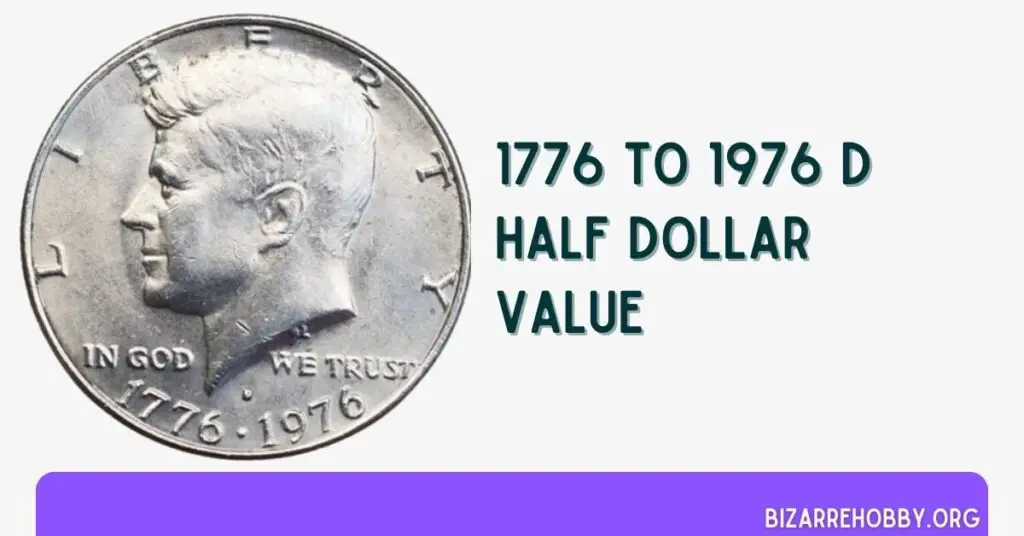
The Denver Mint struck about 287,565,248 Bicentennial Kennedy dollars, identifiable by the D mint mark on the obverse.
Like their Philadelphia counterparts, Denver-minted coins saw wide circulation and are therefore common.
In circulated condition, a 1776-1976 D half dollar is typically worth around $2. However, heavily worn coins with noticeable damage may only be valued near their face value of $0.50.
Uncirculated 1976 D half dollars are less common and more valuable. A coin graded Mint State (MS) 60 might be worth about $6, while one graded MS65 could bring in up to $40.
A record-breaking auction in 2021 saw a 1776-1976 D half dollar sell for an impressive $10,000.
1776-1976 S Half Dollar (Proof) Value
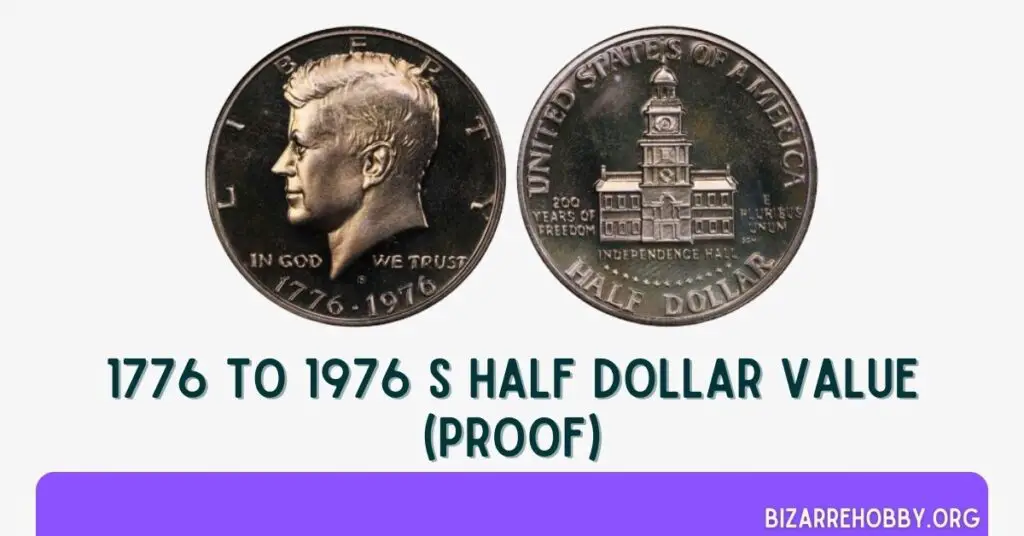
The San Francisco Mint produced approximately 7,059,099 proof Bicentennial half dollars. Proof coins are specially struck and marketed to collectors.
These proofs are created using special dies to enhance detail and contrast. Due to this meticulous process and their limited production, proofs generally command higher prices than regular strike coins.
A 1976 Kennedy half dollar proof graded PF67 is worth about $8, but the value can increase to $18 for coins at the highest end of the grading scale.
1776-1976 S Half Dollar (Silver, Regular) Value
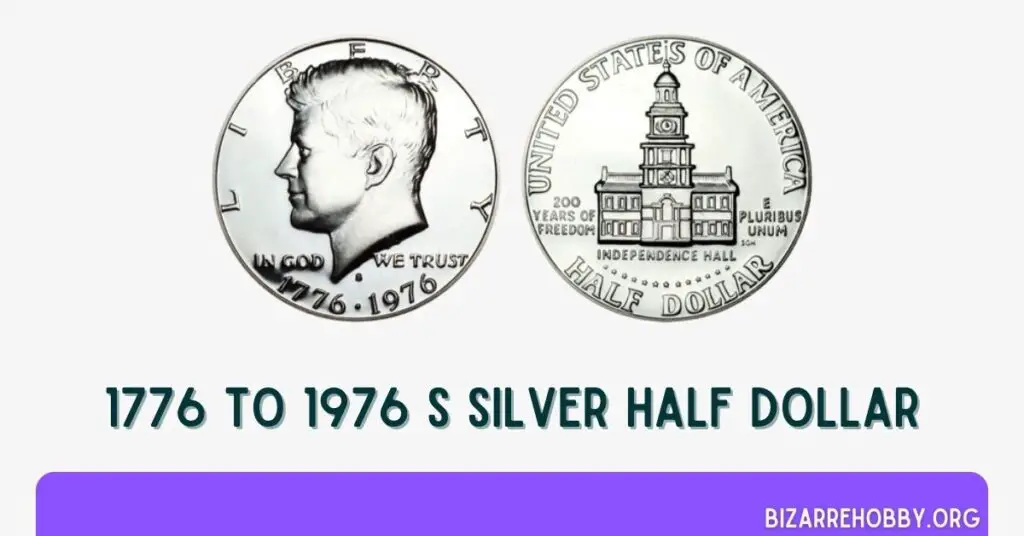
In 1976, the San Francisco Mint also produced silver Kennedy half dollars. These special uncirculated coins were only available as part of a 3-piece mint set for collectors. Approximately 11,000,000 were struck for the Bicentennial.
These silver half dollars consist of a core that is 79% copper and 21% silver, with an outer layer of 80% silver and 20% copper.
At grade MS60, these silver half dollars are valued around $8, increasing to $22 for those graded MS65. Rare specimens in ultra-mint state (MS68) can fetch up to $140.
The most valuable 1776-1976 silver half dollar on record, graded MS69, sold for $9,600 in 2021.
1776-1976 S Half Dollar (Silver, Proof) Value
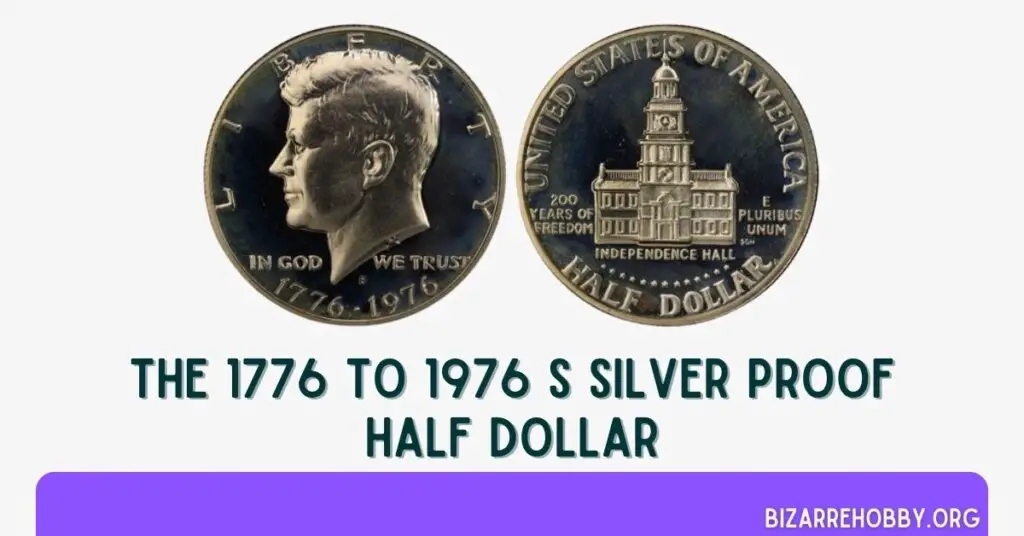
In addition to regular silver strikes, the Mint produced silver proofs. About 4,000,000 silver proofs were minted in San Francisco, with a composition similar to the regular strike silver Kennedy half dollars.
A 1976 S silver proof dollar graded PF70 was auctioned for $2,800 in 2020. These coins are extremely rare and could potentially be quite valuable if you happen to find one.
1776-1976 Bicentennial Half Dollar Grading
The grading of 1976 Kennedy half dollars primarily depends on the coin’s condition. Circulated coins typically show signs of wear, missing details, and faded images, which can decrease their value.
Uncirculated Bicentennial half dollars are relatively uncommon. These coins maintain their original luster, show minimal to no wear, and must be visually appealing. Not only do these coins receive higher grades, but they also generally command higher prices in the collector’s market.
Rare 1776-1976 Half Dollar Error List
Certain errors can significantly increase a coin’s value. Let’s explore some unique mint errors found in the 1976 Kennedy half dollar series.
1776-1976 Half Dollar Curved Clip Error
The curved clip is one of the most intriguing errors in the Bicentennial coin series. This minting error occurs when the punching machine chips off a portion of a blank planchet. The die then imprints the coin design onto this clipped planchet, resulting in an incomplete coin missing some details.

In this case, the date 1776-1976 is absent due to the clipped portion.
A 1976 curved clip error coin can fetch $65-$69, depending on its condition and grading. This value is significantly higher than that of a complete, error-free coin.
1776-1976 Half Dollar Brockage Error
The brockage error is another fascinating anomaly found in a small number of 1776-1976 Kennedy half dollars.
A brockage error happens when an already minted coin adheres to the die. This stuck coin then imprints its image onto the next incoming blank planchet, producing a coin with a mirror or inverted image of the first coin. For instance, instead of Kennedy’s portrait facing left, it would face right due to this error.
A brockage error coin in mint condition can be worth as much as $4000.
Where to Sell Your 1776-1976 Half Dollar
Now that you’re aware of your coins’ potential value, you might be wondering about the best places to sell them online. For a comprehensive list of these sites, including their descriptions, advantages, and disadvantages, you may want to read “Best Places to Sell Coins Online (Pros & Cons)“.
FAQs on 1776-1976 Bicentennial Half Dollars
Are 1776-1976 Bicentennial Half Dollars Worth Anything?
A 1776-1976 bicentennial half dollar coin is typically worth slightly more than its face value. Depending on the coin’s condition, you can expect it to be valued between $2 to $8, with higher-graded coins commanding more.
How Much Silver Is In A 1776-1976 Half Dollar?
The U.S. Mint produced some 1776-1976 silver half dollars. These coins feature an 80% silver outer layer and a 21% silver core. It’s important to note that these coins are not pure silver; they have a copper core and are silver-clad.
How Can You Tell If A 1976 Half Dollar Is Silver?
Bicentennial 1976 half dollars are not pure silver. Instead, these coins have a copper core (79%) with a silver coating (81%). You can verify this by examining the coin’s edge. If you notice a copper stripe, it indicates that the coin has a copper center with a silver clad. Pure silver coins, in contrast, have a uniformly shiny silver edge.
